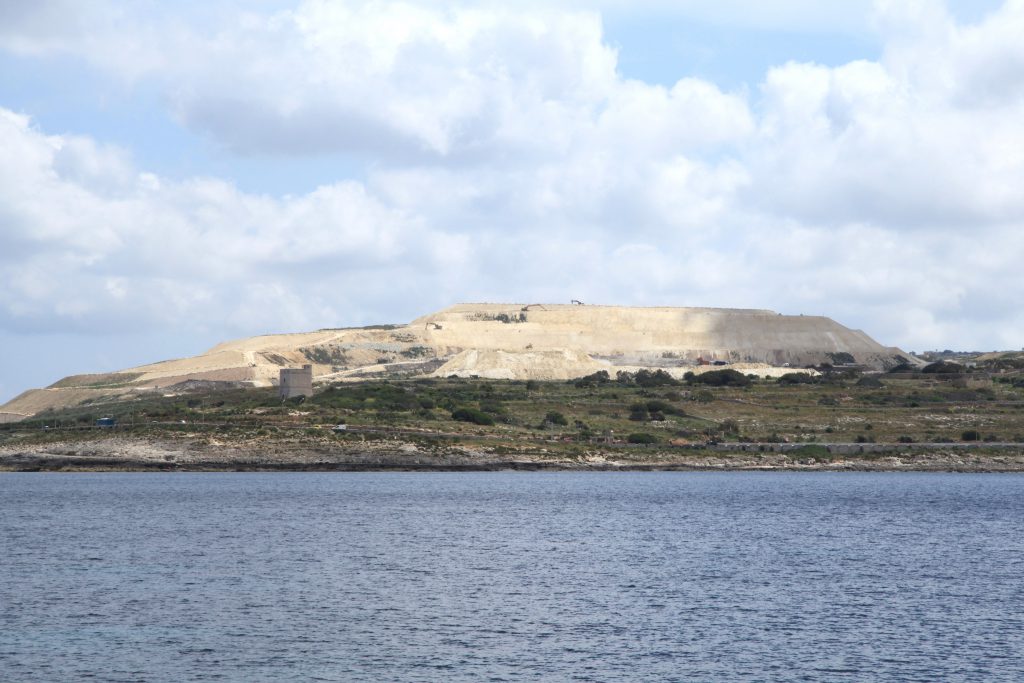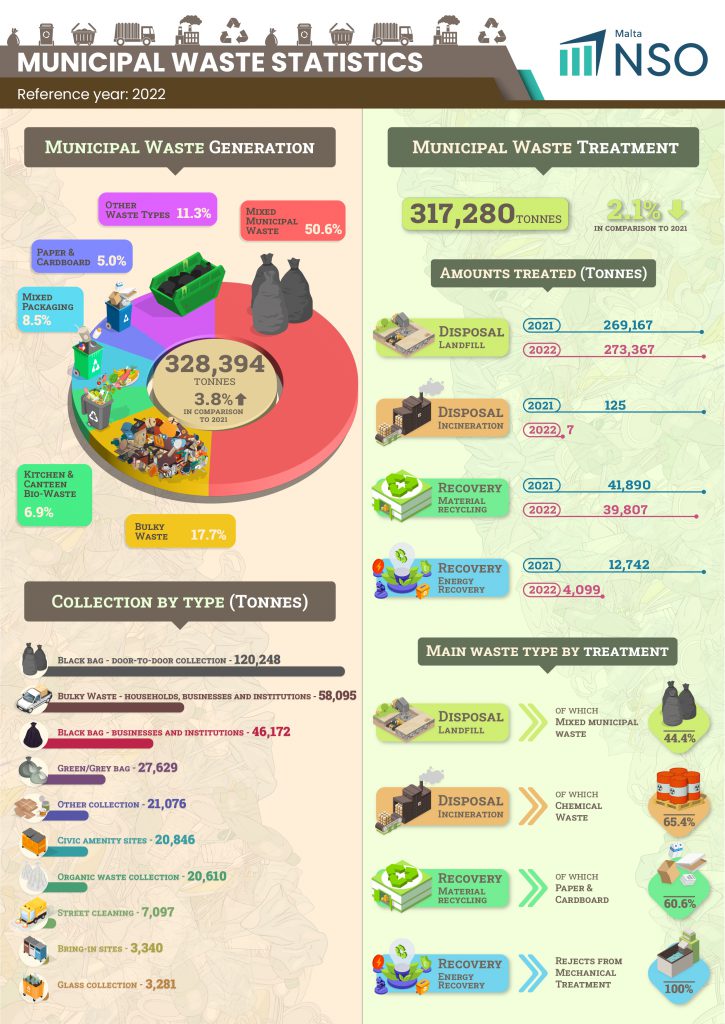No decrease in waste ending up at Magħtab

The volume of waste being sent to the Maghtab landfill has failed to decline despite the mandatory waste separation for households introduced in 2019. Data published by the National Statistics Office shows that in 2022 273,367 tonnes of waste were disposed of through landfilling, which accounts to 86.2% of the total. This is practically the same level of 2018, when the respective figure stood at 272,032. A further analysis of the data between 2018 and last year reveals that the annual total varied between 320,631 tonnes in 2019 and 269,167 in 2021.
Though the NSO would not enter into the merits of why Malta is still so reliant on landfills, the increase in population including tourism is believed to have negatively impacted efforts to reduce waste generation. This trend emerges from the fact that waste generation per capita has significantly declined from 672 kilos in 2018 to 618 kilos last year. However, the overall amount of municipal waste generated last year was still at par with that in 2018. The only logical explanation for this is that the drop in waste per capita was offset by an increase in population. In other words, we now have more inhabitants generating slightly less waste per head.

Meanwhile, the rest of the NSO data on waste management shows that the situation is far from rosy, as there have been declines in the wrong direction, that is in the amount of waste being recycled and the energy being generated.
In 2022, the generation of municipal waste amounted to 328,394 tonnes, increasing by 12,070 tonnes or 3.8% over 2021. When viewed by waste type, in absolute terms, increases were most pronounced for mixed municipal waste (15,285 tonnes), other municipal waste (1,574 tonnes) and bulky waste (1,567 tonnes). On the other hand, the main decreases were registered for paper and cardboard (2,888 tonnes), bio-waste from kitchens and canteens (1,967 tonnes), and wood (1,202 tonnes).
Data on municipal waste generation by waste collection type shows that decreases were registered for the organic waste collection (2,678 tonnes), civic amenity sites (1,999 tonnes), other collection (593 tonnes), the green/grey bag collection (422 tonnes) and bring-in sites (265 tonnes). All the other collection types showed increases, of which the main ones were for the door-to-door collection of the black bag by local councils (10,659 tonnes), black bag collection from businesses and institutions (4,626 tonnes), and bulky waste collection from households, businesses, and institutions (1,567 tonnes). In 2022 the collection of separate waste fractions made up 27.9% of the municipal waste generation, down from the 31.1% that was registered in 2021.
During 2022, the total amount of treated municipal waste decreased by 6,644 tonnes or 2.1% over that recorded in 2021, amounting to 317,280 tonnes.
When compared to 2021, municipal waste that was recycled decreased by 2,083 tonnes or 5.0% to a total of 39,807 tonnes. Paper and cardboard was the most recycled material at 60.6% of the total recycled waste. Increases in recycling were registered for paper and cardboard (10.4%), bio-waste from kitchens and canteens (9.0%) and waste electrical and electronic equipment (4.2%). On the other hand, decreases were recorded for the recycling of clothes and textiles (97.2%), metals (55.4%), plastic (12.8%) and glass (9.1%). In 2022, municipal waste that underwent energy recovery treatment amounted to 4,099 tonnes, declining by 67.8 % over 2021.
